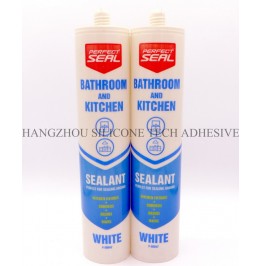Proper timing for pipeline water testing after applying bathroom sealants ensures structural integrity and prevents costly repairs. The curing process of sealants directly impacts their ability to withstand water pressure without leaking or deforming. Below are key considerations for determining the right test timing.

Most bathroom sealants require 24 to 48 hours to fully cure before exposure to water. This period allows the material to harden sufficiently to resist minor pressure fluctuations. For example, silicone-based sealants typically cure within 24 hours under normal conditions (20–25°C, 50–70% humidity), while polyurethane variants may need 48 hours due to their slower chemical reaction rates.
Temperature and humidity significantly affect curing speed. In cold environments (below 10°C), curing time can double, as low temperatures slow molecular bonding. Conversely, excessive heat (above 30°C) may cause premature skinning, trapping moisture inside and weakening the seal. High humidity (>80%) can prolong curing for solvent-based sealants, while low humidity (<40%) may accelerate drying, risking incomplete adhesion.
After sealant application, wait at least 24 hours before conducting the first water test. This ensures the sealant has developed enough strength to withstand static water pressure. For critical applications, such as shower enclosures or floor joints, extend the waiting period to 48 hours to account for environmental variables.
The water test should last 24–72 hours to detect slow leaks or gradual sealant deformation. Maintain water pressure at normal usage levels (typically 0.2–0.5 MPa for residential systems). Avoid excessive pressure, as it may stress uncured sealants. Use a pressure gauge to monitor stability and check for drops indicating leaks.
After testing, examine the sealant for discoloration, bubbling, or softening. Check adjacent surfaces for water stains or moisture accumulation, which indicate penetration. Inspect joints at corners and edges, as these areas are prone to movement and require flexible sealants.
If leaks occur, drain the system and allow the sealant to dry completely (24–48 hours). Remove compromised sections and reapply sealant, ensuring proper surface preparation (clean, dry, and free of old residue). For minor issues, touch-ups may suffice, but extensive failures demand full reapplication.
In regions with extreme temperature swings, retest pipelines seasonally. Freeze-thaw cycles can weaken sealants over time, leading to cracks. Similarly, high humidity in tropical climates may accelerate mold growth, requiring more frequent inspections.
Heavy usage areas, such as family bathrooms, may need stronger sealants or shorter retest intervals. Avoid placing heavy objects on freshly sealed joints for at least 72 hours, as compression can disrupt curing. For commercial settings, consult engineers to design sealant systems rated for higher traffic loads.
By adhering to these guidelines, homeowners and contractors can ensure bathroom sealants perform reliably, minimizing the risk of water damage and costly repairs. Always prioritize manufacturer recommendations and local building codes when planning tests.
Copyright 2019 by Hangzhou Silicone Tech Adhesive Co., Ltd. All rights reserved.
Bathroom Sealant | Acrylic Sealant | Dow Corning 795 | Aquarium Sealant | Dow Corning 732 | Clear Silicone Sealant | Polysulfide Sealant | Glazing Sealant | Mirror Sealant | IG Sealant
Powered by Onepound